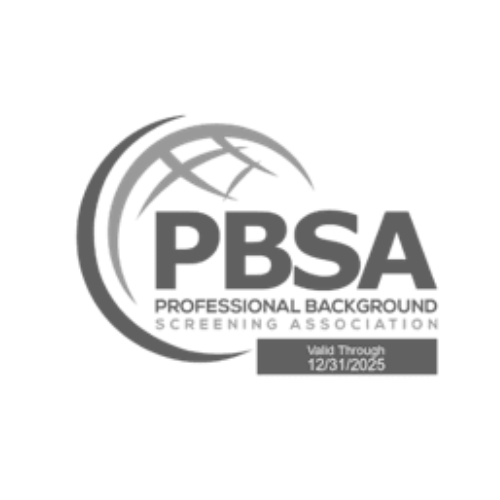In hiring, formal references have always been a standard part of the process. But they’re also limited. Most teams know this.
You get the list the candidate gives you. The people on that list usually say the right things. The feedback feels safe, polite, and rehearsed. And in most cases, it doesn’t really change the hiring decision.
What’s shifting now is how teams are getting a fuller picture—especially for roles where trust, behavior, and influence matter just as much as skills. More HR leaders are building reputation checks into the process. Quietly, consistently, and with clear purpose.
This isn’t about digging for red flags or catching people off guard. It’s about protecting culture, reducing risk, and hiring with more context. The kind that doesn’t show up in a CV or a reference call.
What traditional references leave out
If you’ve ever hired someone based on strong credentials, only to find out later that they struggled to work with others or couldn’t handle complexity, you already understand the gap.
Here’s what makes traditional reference checks incomplete:
- They’re filtered. You only hear from people the candidate trusts.
- They’re careful. Most referees speak in generalities, not specifics.
- They’re narrow. The focus is often just one or two past roles—usually from direct managers.
It’s not that references are wrong. They’re just not enough.
What reputation checks add
The difference with reputation checks is where and how the information comes in. It’s not about collecting opinions. It’s about spotting patterns from people who’ve actually worked with the candidate, often in very different settings.
Here’s what leading teams are doing differently:
- Off-list feedback: This might include project peers, junior team members, cross-functional partners, or even clients. You get a more rounded view—especially of how the person works in teams or under pressure.
- Behavior in public spaces: Contributions to forums, open-source work, speaking at events, or simply how someone handles disagreement in public channels—these all reveal temperament, curiosity, and ethics in ways an interview never will.
- Repeated signals: One glowing review doesn’t mean much. But if five unrelated people mention the same strength—or the same concern—that’s a signal worth listening to.
How teams are making this scalable
Reputation checks used to be informal and inconsistent. One hiring manager might ask around. Another might not. It was based on instinct, not process.
That’s changed. Here’s how leading HR teams are building reputation checks into structured workflows—without slowing things down.
1. They build a protocol for off-list input
Rather than leave it to chance, they map out who might have insight into the candidate’s work. Think:
- Former peers from cross-functional projects
- Junior colleagues who reported indirectly
- Community members in professional spaces
They’re not asking for character reviews. They’re asking simple, job-relevant questions like:
- Would you trust this person to lead a high-stakes meeting without you?
- Have you seen them handle conflict or feedback?
- If you had the chance, would you choose to work with them again?
Feedback is documented—not to build a case for or against, but to spot consistent themes.
2. They factor in public professional behavior
More teams are spending a few minutes looking at how candidates show up professionally outside of their formal roles. That includes:
- Tone and contribution quality on LinkedIn or GitHub
- Industry participation—panels, webinars, writing
- Presence in communities (Slack groups, forums, etc.)
This isn’t surveillance. It’s about seeing real, unscripted engagement that often reflects the kind of teammate someone will be.
3. They work with partners who specialize in this
Reputation checks take time. And when done casually, they risk inconsistency or even bias.
That’s why some teams are now working with verification partners to build this into their background screening process. What these partners help with:
- Identifying credible, relevant off-list sources
- Structuring discreet outreach in a way that’s ethical and compliant
- Aggregating responses in a way that helps HR teams spot patterns, not isolated anecdotes
Firms like AMS Inform offer this as part of a broader pre-employment risk check. It’s discreet, repeatable, and efficient.
4. They integrate the findings into hiring decisions
Reputation feedback only adds value if it’s reviewed alongside other decision inputs. That’s why teams are:
- Adding a “reputation signal” section in candidate scorecards
- Tagging insights into the ATS for future reference
- Using reputation data to validate or question interview impressions
This keeps everyone aligned—not just on what was said, but on what it means in context.
Making this part of your own process
If you’re thinking about building reputation checks into your hiring, here’s where to start:
- Start with roles where trust matters most. Leadership, client-facing, compliance-heavy, or highly autonomous roles benefit most from this layer.
- Define the goal. Are you looking to reduce post-hire friction? Protect cultural fit? Strengthen collaboration? Clear intent sharpens the questions.
- Create a simple insight framework. Keep it lightweight, but consistent—so different people doing checks are gathering comparable insights.
- Be clear about ethics and limits. Everyone on your team should understand the difference between insight and hearsay. Respect and professionalism still apply, even in informal feedback.
- Pilot with a handful of hires. Don’t try to roll it out across the board. Start with 5–10 hires, track outcomes, and adjust before scaling.
The Takeaway
Reputation checks aren’t about distrust. They’re about clarity.
In a hiring environment where resumes are optimized, interviews are practiced, and references are curated, reputation is one of the few things that can’t be easily shaped on demand.
When done right, it’s not intrusive. It’s responsible.
And for HR teams focused on long-term fit, not just short-term fill, it’s quickly becoming a key part of how smart hiring happens.
















